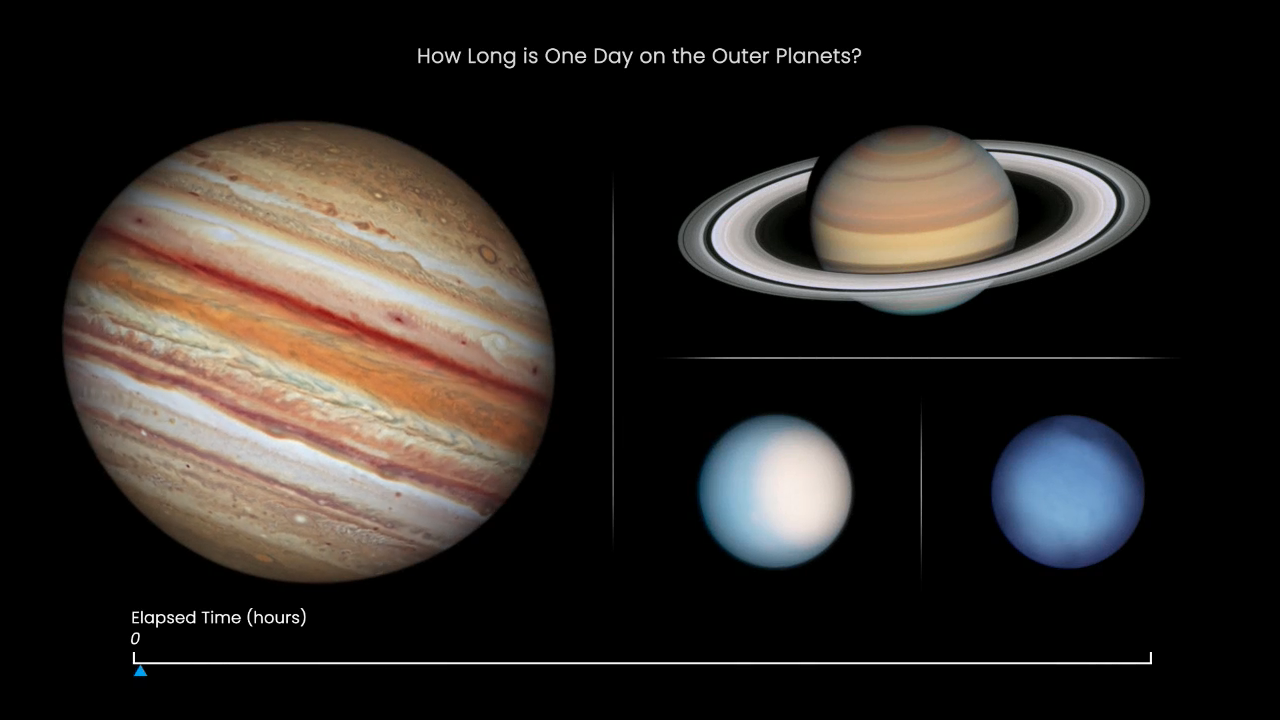1 min read
Saturn

Hubble’s new look at Saturn on September 12 shows rapid and extreme color changes of the bands in the planet’s northern hemisphere, where it is now early autumn. The bands have varied throughout Hubble observations in both 2019 and 2020. Notably, Saturn’s iconic hexagonal storm, first discovered in 1981 by the Voyager 2 spacecraft, was difficult to distinguish in 2020, but it is again clearly evident in 2021. Hubble’s Saturn image catches the planet following the southern hemisphere’s winter, evident in the lingering blue-ish hue of the south pole.
About the Object
- DistanceDistanceThe physical distance from Earth to the astronomical object. Distances within our solar system are usually measured in Astronomical Units (AU). Distances between stars are usually measured in light-years. Interstellar distances can also be measured in parsecs.At the time of observations, the planet was 9.17 AU from Earth (about 850 million miles).
- DimensionsDimensionsThe physical size of the object or the apparent angle it subtends on the sky.The planet (without rings) has a diameter of roughly 75,000 miles (120,000 km) at the equator.
About the Data
- Data DescriptionData DescriptionProposal: A description of the observations, their scientific justification, and the links to the data available in the science archive.
Science Team: The astronomers who planned the observations and analyzed the data. "PI" refers to the Principal Investigator.The HST observations include those from program 16266 (A. Simon)
- InstrumentInstrumentThe science instrument used to produce the data.WFC3/UVIS
- Exposure DatesExposure DatesThe date(s) that the telescope made its observations and the total exposure time.12 Sep 2021
- FiltersFiltersThe camera filters that were used in the science observations.F395N, F502N, F631N
- Object NameObject NameA name or catalog number that astronomers use to identify an astronomical object.Saturn
- Object DescriptionObject DescriptionThe type of astronomical object.Planet
- Release DateNovember 18, 2021
- Science ReleaseHubble’s Grand Tour of the Outer Solar System
- CreditNASA, ESA, Amy Simon (NASA-GSFC), Michael Wong (UC Berkeley); Image Processing: Alyssa Pagan (STScI)

These images are a composite of separate exposures acquired by the WFC3 instrument on the Hubble Space Telescope. Several filters were used to sample medium wavelength ranges. The color results from assigning different hues (colors) to each monochromatic (grayscale) image associated with an individual filter. In this case, the assigned colors are: Blue: F395N, Green: F502N, Red: F631N

Related Images & Videos

Outer Planets Rotating (Annotated)
From its vantage point high above Earth's atmosphere, NASA's Hubble Space Telescope has completed this year's grand tour of the outer solar system – Jupiter, Saturn, Uranus, and Neptune. Hubble's snapshots of the outer planets reveal both extreme and subtle changes rapidly...
Share
Details
Claire Andreoli
NASA’s Goddard Space Flight Center
Greenbelt, Maryland
claire.andreoli@nasa.gov





































